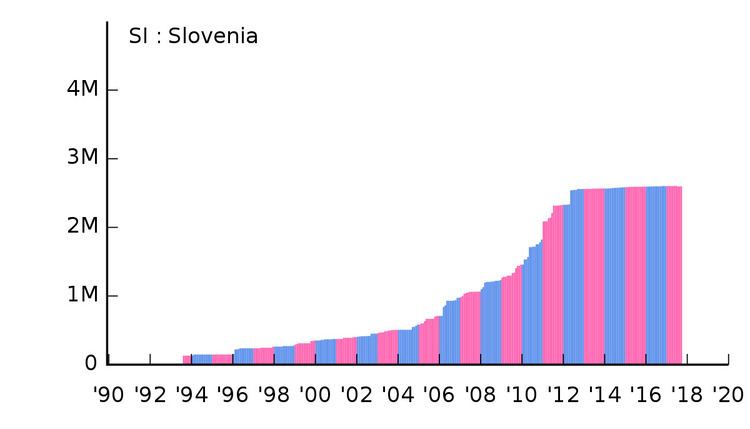 | ||
The use of the Internet in Slovenia is widespread. According to official polls in the first quarter of 2008, 58% citizens between the ages 10 and 74 were Internet users, which is above Europe's average. In the same period, 59% households (85% of which through broadband) and 97% companies with 10 or more employed (84% of those through broadband) had Internet access. In 2011, 73% households had Internet access, and 67% households had broadband. As of 2011, 29% of Slovenians have never used Internet.
Contents
The use of Internet for specific purposes (online banking, e-Government services, electronic commerce, reading online newspapers, etc.) is near the average for EU27.
The country's top-level domain is .si. It is administered by ARNES, the Academic and Research Network of Slovenia. The organization also provides access to educational and research institutions. Other major providers are Telekom Slovenije (under the trademark SiOL), Telemach, AMIS and T-2. Slovenian ISPs provide ADSL, ADSL2+, VDSL, SHDSL, VDSL2 and FTTH.
Slovenia is noted as one of the leading European countries by the percentage of users who browse the web using Mozilla Firefox. In 2007, 47.9% page requests were made with Firefox, more than in any other European country.
History
The first IP connection in the country was established between Jožef Stefan Institute and the Dutch NIKHEF institute in October 1991. The laboratory for open systems and networks at the Jožef Stefan Institute housed the primary domain server for the .yu domain at the time. .si top-level domain was registered in 1992 after Slovenia gained independence, however the use of .yu TLD continued for several years and only in the second half of the 1990s was the registry transferred to University of Belgrade. Similarly, the use of X.400 and X.25 protocols by ARNES continued for several years due to established European research institutes' preference for ISO/OSI standards.
In a telephone poll of households in 1996, 6.5% of population declared themselves as Internet users, although the number was probably overestimated due to methodological problems.
Internet censorship and surveillance
There are no government restrictions on access to the Internet or credible reports that the government monitors e-mail or Internet chat rooms without appropriate legal authority. The constitution and law provide for freedom of speech and press, and the government generally respects these rights. However, the law prohibits hate speech, including incitement to intolerance as well as violence. The law provides criminal penalties for defamation that harms a person’s honor or name. The constitution and laws prohibit arbitrary interference with privacy, family, home, or correspondence and the government generally respects these prohibitions in practice. Individuals and groups freely engage in the expression of views via the Internet.
The independent organization Helpline Spletno Oko (Web Eye) monitors the presence of hate speech and child pornography on the Internet and received on average 62 reports and tips per month in 2012.
On 28 January 2010 the Slovenian National Assembly adopted changes to the law governing gambling. Under the law Internet service providers are responsible for blocking access to Internet gambling web sites that are not licensed by the Slovenian government.
